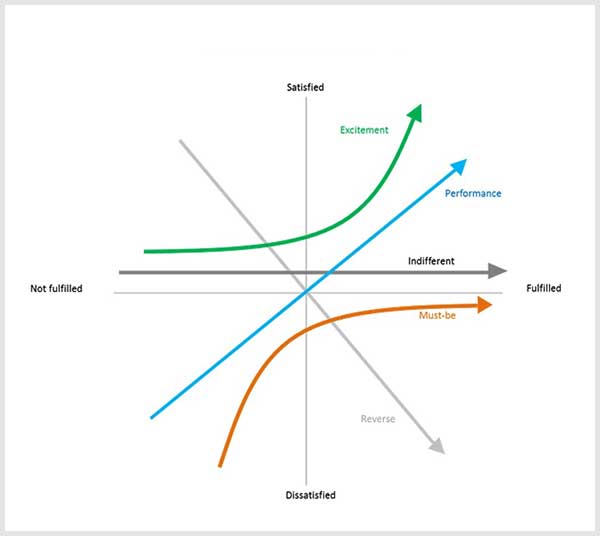The Kano Model categorizes product features into five main categories based on how they influence customer satisfaction

The Kano Model is a theory developed by Professor Noriaki Kano in the 1980s while he was a professor at the Tokyo University of Science. It's a theory used for product development and customer satisfaction analysis. The model suggests that customer satisfaction with a product or service is not linearly correlated with its features but rather depends on how well those features meet or exceed customer expectations.
The Kano Model categorizes product features into five main categories based on how they influence customer satisfaction. Let's explore each category with examples:
1. Basic Needs (Must-Be Quality):
- These are essential features that customers expect as a minimum requirement. If these features are missing, it leads to dissatisfaction.
- Example: For a software application, basic needs might include:
- Stability: The application should not crash frequently.
- Security: Users expect their data to be protected from unauthorized access.
- Usability: The interface should be intuitive and easy to navigate.
2. Performance Needs (One-Dimensional Quality):
- These features directly correlate with customer satisfaction. The better these features perform, the more satisfied customers are.
- Example: In the context of a mobile phone:
- Battery Life: Longer battery life leads to higher satisfaction.
- Speed: Faster performance of applications and responsiveness of the device.
- Camera Quality: Better camera resolution and image quality.
3. Excitement Needs (Attractive Quality):
- These are unexpected features that can delight customers and exceed their expectations. They differentiate the product from competitors.
- Example: For a smartwatch:
- Voice Command Integration: The ability to control the watch using voice commands.
- Health Tracking Features: Advanced health monitoring beyond basic step counting.
- Personalization Options: Customizable watch faces and straps.
4. Indifferent Needs:
- These features don't significantly impact customer satisfaction. Whether present or absent, they have minimal effect.
- Example: In a word processing software:
- Change Log Font: Some users may prefer this feature, but its absence wouldn't greatly affect overall satisfaction.
- Help Documentation: While important, its absence may not dramatically affect satisfaction if the software is intuitive.
5. Reverse Needs (Questionable Quality):
- These are features that, when present, actually decrease customer satisfaction. They might be perceived as unnecessary or annoying by customers.
- Example: In a music streaming app:
- Intrusive Ads: Excessive advertisements during music playback can frustrate users.
- Mandatory Account Creation: Requiring users to create an account before accessing basic features may deter some users.
Understanding these categories can help product developers prioritize features effectively, focusing on those that contribute most to customer satisfaction while avoiding potential pitfalls.